What to do if you see your Oil light on
What to do if you have an oil light on
You’re driving along and notice you have an oil light on warning

LOW OIL PRESSURE
on your dash. Here’s what it means and the steps you should take.
Oil light on — IMMEDIATELY Pull over to a safe place and shut off the engine!
Do NOT continue driving when you have an oil light on. The oil light it’s telling you that your engine’s oil pressure has dropped to a dangerously low level. Oil pressure is what keeps metal parts from contacting one another. If you keep driving, YOU WILL DESTROY your engine. So your first step is to pull over to a safe spot and SHUT OFF YOUR ENGINE.
Check your oil level
If your engine is burning or leaking oil, the level can become so low that the oil pump starts sucking air which causes oil pressure to drop below the critical 7-psi threshold. To check your oil, wait about 5-mins after
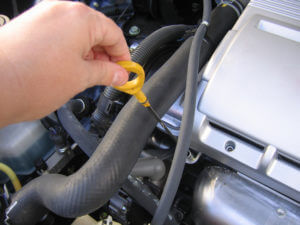
Find the dip stick on your engine and pull it straight out.
shutting off the engine. That’ll allow the oil in the upper part of the engine to drain back down to the oil pan so you can get a more accurate measurement of the oil level. Then remove the engine oil dipstick and wipe off all oil. Reinsert the dipstick and make sure it seats all the way into the dipstick tube. Then pull it out and read the oil level. If the oil is below the bottom portion of the markings, that could be causing your oil light on the problem.
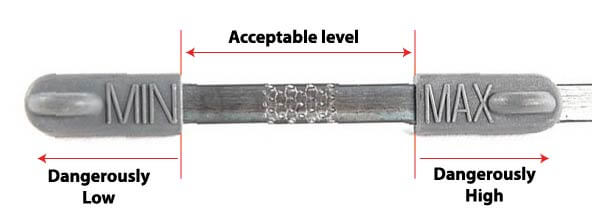
How to read a dip stick
Add oil to your engine
This is a tough one because you’re stopped by the side of the road and you’ll be tempted to drive to the nearest auto parts store or convenience store to buy more oil. But driving your car with the oil light on could possibly destroy your engine and that can easily cost $3,000. So it’s time to evaluate just how low your oil level is. See the image below
What oil should you buy?
Refer to your owner’s manual to learn the recommended oil for your engine. If the store doesn’t have that oil, find any 5W-20 or 5W-30 oil and add it. Adding the wrong oil is better than running your engine when it’s low on oil. Then get an oil change as soon as possible once you get to your destination and have your engine checked for leaks or excessive oil consumption.
What if your oil level isn’t low but you still have an oil light on warning?
I see two scenarios here: the oil pressure sensor is bad and providing false readings, or it’s telling the truth and you really do have a low oil pressure problem.
Oil pressure sensors fail quite regularly, so diagnosing the sensor should be your first step. There are two ways to do that: replace the sensor with a new unit and see if the light goes out or install a mechanical oil pressure gauge and record the actual oil pressure. See these posts for instructions:
Replace an oil pressure sensor
Test oil pressure with a gauge
If your old sensor was worn or faulty and the oil light stays out after replacement, you’ve found the source of the problem. However, if you continue to see the oil light on warning, you must continue with your diagnosis.
What causes low oil pressure?
Low oil pressure in an internal combustion engine is a serious problem. Oil pressure is what prevents metal parts from contacting one another. That’s why driving with your oil light on can destroy your engine.
4 things that cause low oil pressure
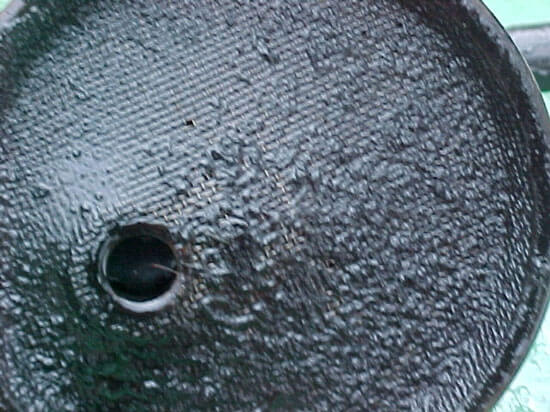
Clogged oil pickup screen
Clogged oil pickup screen — If you’ve neglected routine oil changes and have developed sludge buildup in the bottom of the oil pan, that sludge can restrict or clog the screen at the end of the oil pump pickup tube. That causes oil pump starvation, which causes low oil pressure. A shop can check for a plugged oil pickup screen by draining the oil and using a flexible borescope camera or they can remove the oil pan to do a physical inspection. If the problem is caused by a plugged screen, the shop can remove the sludge buildup and test to make sure you get full oil pressure afterwards.
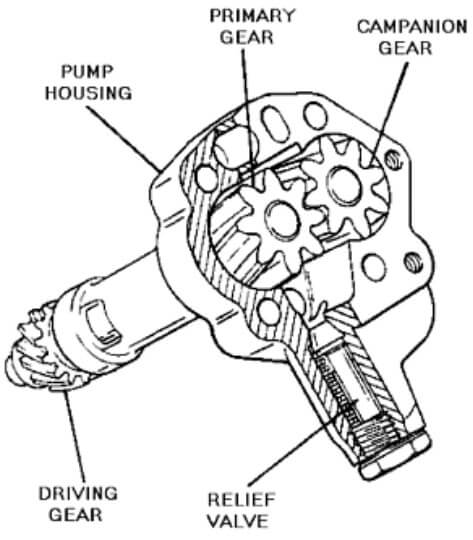 Stuck oil pressure relief valve — The oil pressure relief valve is designed to bleed off excessive oil pressure to prevent seal damage if oil pressure rises to dangerous levels. If you’ve neglected routine oil changes, sludge and particles can cause the pressure relief valve to stick in the full bleed-off position, causing a full time low pressure situation.
Stuck oil pressure relief valve — The oil pressure relief valve is designed to bleed off excessive oil pressure to prevent seal damage if oil pressure rises to dangerous levels. If you’ve neglected routine oil changes, sludge and particles can cause the pressure relief valve to stick in the full bleed-off position, causing a full time low pressure situation.
Unfortunately, the only way to check the oil pressure relief valve is to remove it and check for binding or sludge buildup. If the shop finds buildup or binding, the fix usually involves replacing the valve or the entire oil pump
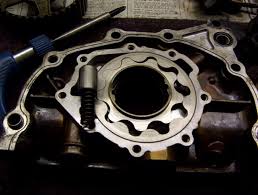 Worn oil pump — If only it were this simple. Yes, oil pumps can wear out. But a worn oil pump is usually a symptom of far worse wear in the engine itself. Clean oil and routine oil changes prevent engine wear and also prevent oil pump wear. If you replace your oil pump, be aware that you’re probably living on borrowed time with the rest of the engine components.
Worn oil pump — If only it were this simple. Yes, oil pumps can wear out. But a worn oil pump is usually a symptom of far worse wear in the engine itself. Clean oil and routine oil changes prevent engine wear and also prevent oil pump wear. If you replace your oil pump, be aware that you’re probably living on borrowed time with the rest of the engine components.
Excessive bearing clearances — Oil pressure is a measurement of resistance to flow. In other words, the tight clearances between the crankshaft and bearings are what cause oil pressure to build. If you neglect routine oil changes and cause bearing wear, the larger clearances reduce the pump’s ability to build pressure. If you’ve installed a new oil pressure sensor and replaced the oil pump and still have low oil pressure, you’ve got a worn-out engine. There are no magical oil treatments to solve this problem. You’re looking at a total engine rebuild, a used engine install or a new vehicle.
See this post on how to test oil pressure using a mechanical or digital gauge
©, 2017 Rick Muscoplat
Posted on by Rick Muscoplat
